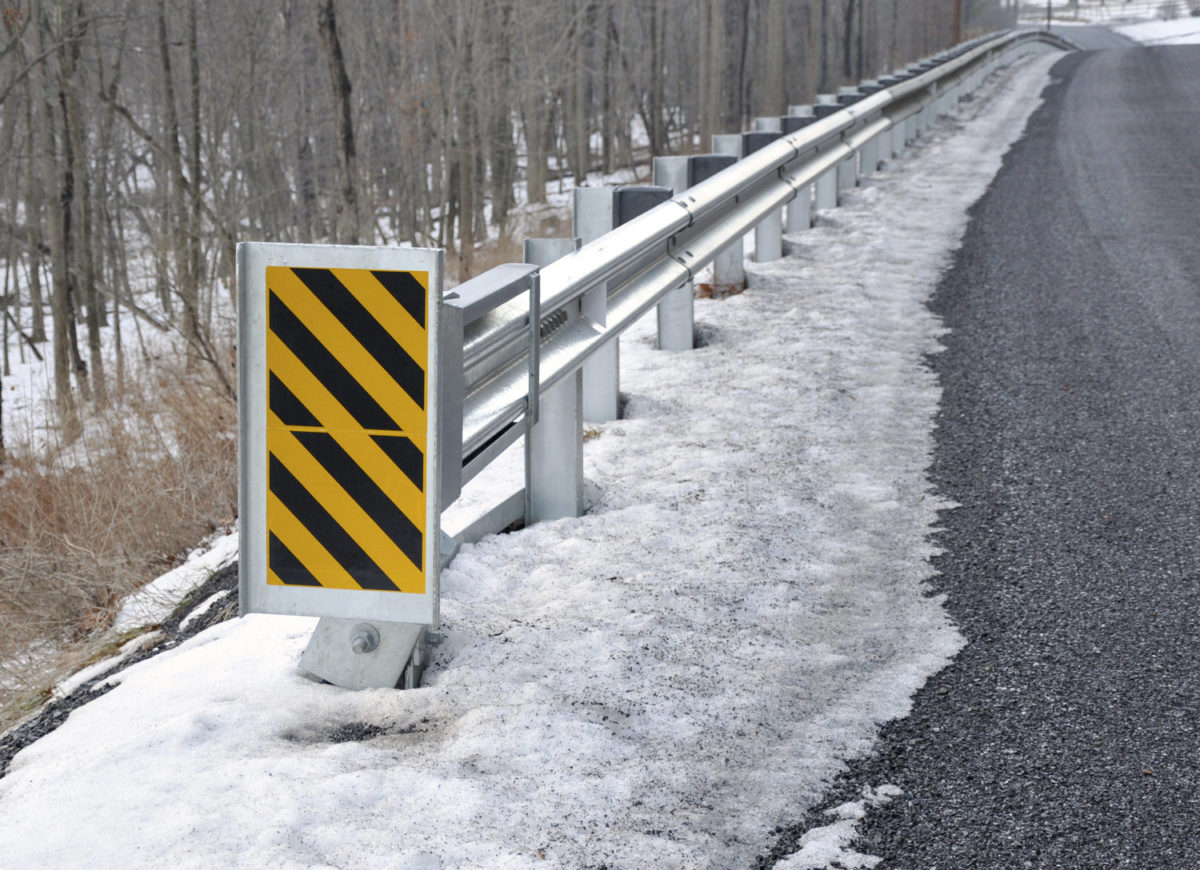
Dangerous guardrails installed on U.S. roadways are maiming and killing motorists. While the problems are well-established, the story behind them tells a much darker tale of deceit and corporate misconduct.
I’ll start at the beginning. When first installed on national highways, the ends of guardrails lacked critical safety features that prevented them from piercing colliding vehicles. To remedy the problem, early designs added downturned ends—some of which were buried—that had the unintended consequence of causing deadly rollovers.
Fast forward to the late 1980s when energy-absorbing end terminals were developed to absorb the impact from a vehicle and allow it to “ride down” the crash without piercing or overturning the vehicle. During this time, the ET-2000, manufactured by Texas-based Trinity Industries, emerged as one of the most popular energy-absorbing end terminals.
Following extensive testing, the Federal Highway Administration (FHWA) approved the ET-2000 end terminal system for installation on the national highway system and it quickly became one of the most widely used end terminals.
In 2000, despite having no reported performance problems and a proven record of safety, Trinity redesigned the ET-2000, creating a lighter, cheaper version that it named the ET-Plus. But, poor design, lack of testing and secret design changes led to deadly consequences, and the ET-Plus has become the subject of product defect lawsuits nationwide. Below are five reasons why deadly guardrails are on U.S. roadways.
1. Trinity’s Unnecessary and Dangerous Redesign. Trinity was motivated to redesign the ET-Plus because of its aging patent, not because it wanted to improve its product. In a single meeting, Trinity executives made drastic, ad hoc design changes that lacked engineering analysis, design calculations or computer simulations. In particular, Trinity removed roughly 100 pounds of steel from the end terminal and changed the dimensions of other critical components of the system. Most importantly, the changes produced an asymmetrical head design. This asymmetry increases rotation during the extrusion process, which substantially increases the potential for lockup and exposure of the vehicle to the guardrail’s blunt end.
2. Lack of Adequate Crash Testing. In May 1993, a group of engineers published a set of crash-testing guidelines, NCHRP Report 350, which contains seven recommended tests for any new or significantly modified end terminal. Ironically, this group of engineers worked for the Texas A&M Transportation Institute (TTI), the same organization that designed the ET-2000 and ET-Plus with Trinity Industries.
While there is no federal safety standard for testing guardrail end terminals, the FHWA will only allow end terminals that meet the criteria in NCHRP 350 to be installed on federal highway projects. In October 1999, Trinity, conducted only one crash test of its new ET-Plus system, and despite its financial interest and apparent conflict of interest in the outcome, TTI conducted and evaluated the test. Predictably, TTI determined the ET-Plus successfully completed the crash test in accordance with NCHRP 350 requirements. Two months later, Trinity submitted its single crash test report for the ET-Plus with a 5-inch end terminal, identifying six design changes from the ET-2000 and seeking approval for federal reimbursement. Following FHWA approval, Trinity started marketing its new and “improved” ET-Plus system, and it quickly became one of the most installed end terminals in the country.
3. Secret Design Changes. During the nearly two decades that Trinity marketed and sold the ET-Plus, it admittedly failed to conduct a single in-service performance evaluation of the system. In November 2004, Trinity executive Steve Brown emailed superiors pushing modifications to the ET-Plus, including reducing the guide channel from 5 inches to 4 inches, saving $2 per end terminal. Trinity was again pushing a design modification without conducting a proper engineering analysis or in-service evaluation.
Without any input from engineers, Trinity designed and fabricated a prototype 4-inch ET-Plus to replace the 5-inch. Again, Trinity conducted only a single crash test that (again) was evaluated by TTI. The crash test report—prepared by TTI and submitted by Trinity—contained no mention of the design modifications; rather, Trinity referred to the 4-inch ET-Plus as a “standard” end terminal. The FHWA approval letter highlighted seven design modifications, none of which mentioned the change to the 4-inch guide channel.
4. A History of Failed Crash Tests and Deceit. On September 17, 2001, Trinity conducted a crash test with the original 5-inch ET-Plus end terminal system. Almost immediately upon impact, the extruder head locked up, the guardrail buckled, the vehicle rotated clockwise, and the W-beam penetrated the driver’s side compartment. The test was deemed a failure. In June 2005, Trinity performed a crash test with the 4-inch ET-Plus system and the results were nearly identical to the previous test—the guardrail penetrated the driver’s side occupant compartment. Over the next six months, Trinity conducted four additional crash tests; each time, the extruder head buckled and pierced the test vehicle. Trinity never disclosed these failures to the FHWA or state departments of transportation.
In October 2014, a Texas federal jury found Trinity Industries guilty of defrauding the U.S. government by intentionally misleading the FHWA about the design changes it made to the ET-Plus system. In late 2014, the FHWA required Trinity to conduct additional crash tests of the ET-Plus system. During that test, the ET-Plus system buckled upon impact with the vehicle. As in previous tests, the buckling rotated the vehicle clockwise and slammed it into the blunt end of the exposed guardrail, causing extensive penetration into the driver’s door. This failure was caused by the 4-inch ET-Plus extruder head.
5. Another Bad Guardrail Hits U.S. Roadways. At this time, more than half the country has banned installation of the ET-Plus. Accidents involving these products have left victims maimed—and sometimes dead—in accidents from coast to coast. Unfortunately, dangerous guardrails are not limited to Trinity products. In the wake of Trinity lawsuits across the country, another dangerous guardrail system was being installed in states that were tearing the ET-Plus systems out of the ground. The X-Lite end terminal system, manufactured by California-based Lindsay Transportation Solutions, was created so that beams would slide and telescope upon each other and all come to a stop at the black and yellow end terminal. When impacted, the end rail often fails to properly contain the telescoping rails. The X-Lite has a poor performance record, and the “independent” testing that was conducted on the X-Lite was controlled by the manufacturer. At least nine states have stopped using this model and have started replacing it because of accidents that resulted in death and serious injuries.
The deadly guardrail story is a tale of corporate culture that places higher value on the bottom line than human safety. Believe it or not, the details above are only part of the story. You can read more about Trinity’s sordid past and the Lindsay X-Lite guardrails here.
When corporations put profits before human safety and welfare, the civil justice system is the last line of defense to protect consumers. Lawsuits have proven to be the most effective—and sometimes the only—avenue for exposing negligent behavior and deterring corporate misconduct.


